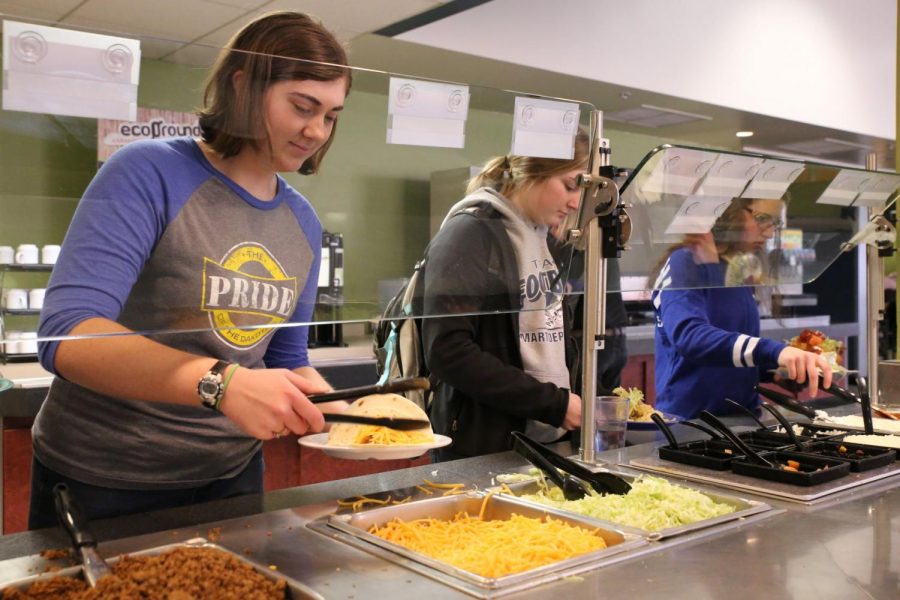Community takes action to reduce food waste, increase sustainability
Kate Ellis, junior civil engineering major, fills her plate at the Taco Tuesday bar in Larson Commons March 21. Aramark has taken steps to monitor eating habits of students, adjust menus to those numbers and reduce food waste at South Dakota State.
March 22, 2017
Sustainability isn’t just saving energy and recycling. It can also mean joining the “clean plate club” or choosing not to waste food.
South Dakota State Sustainability Specialist Jennifer McLaughlin believes students can help in sustainability efforts by choosing to be conscientious about what they throw away.
“We’ve all heard of the three R’s: Reduce, Reuse and Recycle, but out of these three, ‘reduce’ is by far the most effective,” McLaughlin said.
She encourages students to finish eating all the food they purchase while being mindful that not finishing food not only is a loss of profit, but also of natural resources.
“The less food we need to produce to feed our populations and the less food we toss, the smaller an environmental impact we will have,” McLaughlin said.
Between 30 to 40 percent of food supply is wasted in the United States, according to the United States Department of Agriculture. That’s more than 20 pounds of food wasted per person per month.
Aramark, a food service company responsible for providing the majority of food on SDSU’s campus, including chain restaurants, the market and catering services, are also seeking to reduce food waste.
Heidi Haro, the director of operations for Aramark at SDSU, said most of food waste prevention on campus begins with the decisions she and staff members make.
“We make every effort to reduce waste before it occurs through our food management process,” Haro said.
Aramark’s food planning process begins with looking back on previous sales and recommendations offered by consumers throughout the past year and using those numbers to reveal the types and quantities of products that should be purchased.
“The best thing we can do is continually adjust and tweak our menus,” Haro said.
Sometimes food services still have excess food at the end of the day. Dependent on factors such as the type of food, temperature of the food and how the item can be repurposed, some foods, as long as they are handled, stored and labeled properly, can be reused.
Despite the efforts Aramark is making toward reducing food waste, this is also a responsibility of students.
Both Haro and McLaughlin believe students can make an impact on decreasing food waste on campus. McLaughlin said composting or repurposing food waste by other means are good alternatives to placing food scraps in the landfill, but are not the best options.
McLaughlin believes lowering visual food standards is a reasonable way to begin reducing food waste.
“Just because a fruit or veggie has an odd shape doesn’t mean it is any less nutritious,” McLaughlin said.
She also encourages students to expand their food palates in an effort to finish their food.
“You may surprise yourself and like [the food item] and you will have reduced the amount of food you wasted,” McLaughlin said.
Allyson Wirfs, a freshman pre-pharmacy major, simply believes students don’t recognize their power in controlling food waste.
“Students need to step back and value the only environment they have,” Wirfs said. “I try my best to eat all of my food and to not waste plastic and cardboard. I have the mindset that every small change I make in relation to food waste can create a chain affect and help reduce the problem at hand.”
























